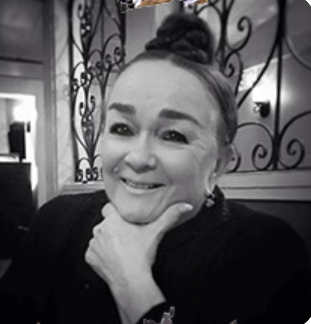Bibliographical Information
Patricia Polacco is a famous American author and illustrator in the field of children literature. She is of Ukrainian-Russian decent which explains the names of some of her books such as “Babushka’s doll” or “Babushka Baba Yaga.” There seems to be not much reliable information about Patricia Pollaco’s relationships with her grandmother besides that she lived with her at the farm in Union City, Michigan (Omics International). Apparently, they were close as books feature her in an imaginary Russian-style village setting in “Babushka Baba Yaga” short story.
Book Comparison
The books under comparison are “Babushka Baba Yaga” (1999) and “The Blessing Cup” (2013). Booth books are picture storybooks that share the setting of a Russian village. The peculiar detail about illustrations is the color change that occurred after 14 years. While the earlier illustrations of a Russian lifestyle were fully colored pencil-style images, in the “Blessing Cup” they were mostly black and white with colored elements crucial for narration. This change might be demonstrative of a transition towards a more educative style that focuses child’s attention on specific details. The characters have also changed from an imaginary to real ones. In an earlier book, the author depicts the personality of famous Russian folklore character, Baba Yaga, while in the latter work, she describes her own grandmother Anna. The transition to realism might be warranted by the author’s own increased value for and recognition of the historical heritage of her family, and nostalgic motivations.
The writing style, however, seems to remain consistent over the years. The author uses unsophisticated vocabulary pertinent to increase understanding in a younger audience for whom the books are generally intended. However, in “The Blessing Cup,” the author occasionally uses historical terms such as “Shtetl” that might arouse confusion (Polacco, The Blessing Cup 2). On the other hand, illustrations might explain some of them.
In both books, the child should not have any difficulties with identifying situations or topics presented in “Babushka Baba Yaga” as all of them are pretty straightforward. However, not any child might have a background in Russian Folklore to fully apprehend why Baba Yaga is traditionally presented as a negative character while in Polacco’s books she has a positive nature. In the other book, the concerns may arise due to the recognition of historical events touched in the story such as the banishment of Jews and why the narrator’s family is being chased by Tsar’s soldiers.
The common theme that the author touches in both of her books includes the crucial importance of family. In “Babushka Baba Yaga” this is translated through the transition from a positive change in the main character, while in the other book the author introduces hardships of life to illustrate the need to be united with one’s closest relatives. The other theme that is also common for both works is the generational connectivity. In the 2013 book, it is illustrated by sharing wisdom with grandchildren through the tea set that is carefully preserved and passed on from parents to children. In the 1999 book, the Baba Yaga serves as a protector from external threats (wolves in the story) and a loving grandmother that preserves the continuation of species (Polacco, Babushka Baba Yaga 24). I would recommend both books to children because they story elements such as conflicts, character setting, and resolution. As for the prior knowledge, the traditional Alexander Pushkin’s stories about Baba Yaga could be useful. The age group suitable to read these books may include children from 5-8 years as they should form the basic reading skills by then and the illustrations should help them understand the topics and events. The extension I would use with these books is the drawing activity that enables children to recreate their daily life in a similar sketch style used by Polacco.

Works Cited
Omics International. “Patricia Polacco.” omicsgroup. Web.
Polacco, Patricia. Babushka Baba Yaga. Reprint edition, Puffin Books, 1999.
—. The Blessing Cup. Simon & Schuster/Paula Wiseman Books, 2013.
—. Home, n.d. patriciapolacco. Web.